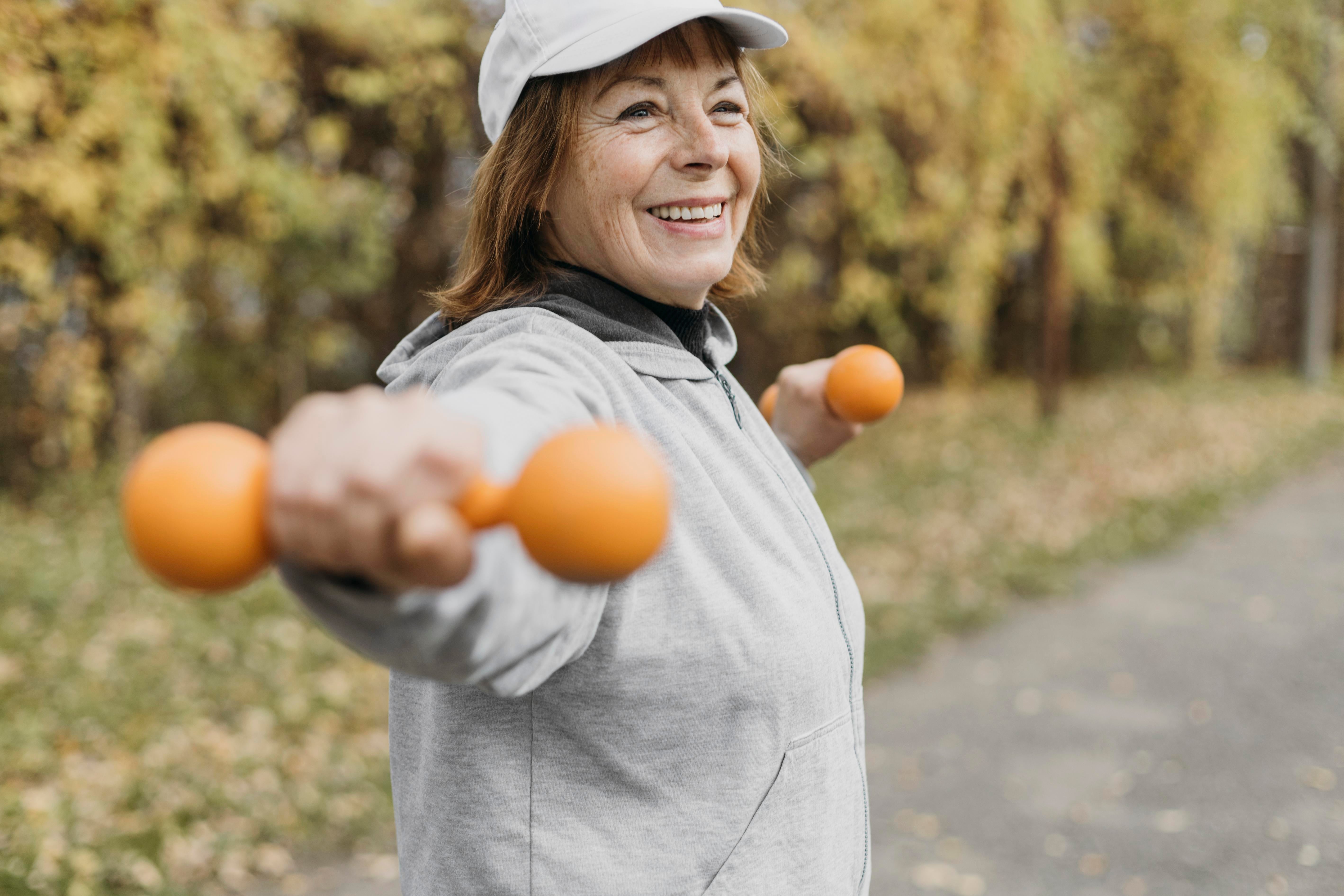
Polyphenols: What are they and how are they beneficial?
Polyphenols are naturally occurring plant compounds with antioxidant and anti-inflammatory properties that may help keep you healthy and protect against various diseases. They commonly occur in fruits, vegetables, herbs, spices, tea, coffee, dark chocolate, and red wine, and can contribute to various health benefits. They have different kinds of antioxidant activity to neutralize a wide range of harmful free radicals and non-radical oxidising substances mainly derived from oxygen and frequently called reactive oxygen species (ROS). Oxidative stress occurs when there is an excess of ROS and other oxidants and insufficient antioxidants to control these reactive molecules. Oxidative stress can result in damage to living cells and increase the risk of cancer, diabetes, and heart disease. Some polyphenols can also reduce inflammation, which is considered to be the root cause of many chronic illnesses. They can be subdivided into flavonoids, phenolic acids, polyphenolic amides, and other polyphenols.
Polyphenols are categorized into four main groups
The amount and type of polyphenols in foods depend on the food, including its origin, ripeness, and how it was farmed, transported, stored, and prepared.
Key points to remember:
• All flavanols and flavonols are considered polyphenols, but not all polyphenols are flavonoids.
• Different types of polyphenols have varying health benefits and occur in a wide variety of plant foods.
Flavonoids.
- These account for around 60% of all polyphenols. Examples include quercetin, kaempferol, catechins, and anthocyanins, which occur in apples, onions, dark chocolate, broccoli, red cabbage, and berries.
- Flavanols and flavonols, sub-classes of flavonoids, are often responsible for the vibrant colours of fruits and vegetables. A specific type of flavonoid which occurs in cocoa, tea, and red wine has potential cardiovascular benefits.
Phenolic acids.
This group accounts for around 30% of all polyphenols. Examples include ferulic acid and chlorogenic acid, which are found in coffee and cereal grains.
Polyphenolic amides.
This category includes capsaicinoids, found in chili peppers, and avenanthramides, found in oats.
Other polyphenols
This group includes stilbenes found in grapes and berries, resveratrol in red wine, ellagic acid in berries, curcumin in turmeric, lignans in flax seeds, sesame seeds, and whole grains, and caffeic acid in coffee. Ferulic acid and gallic acid are notable for having extremely high antioxidant (ABEL-RAC) scores.

ABEL-Max™: The Science behind the Success
ABEL-Max™ is a scientifically formulated mixture of four plant extracts: grapeseed, green tea, pomegranate, and pine bark. These extracts contain a diverse range of polyphenols and possess very high antioxidant ABEL-RAC scores. They also demonstrate quantifiable positive synergy between their constituents.
GRAPESEED EXTRACT
The dietary consumption of grapes and grape-derived products is associated with a lower incidence of degenerative diseases such as cardiovascular disease and certain types of cancer. Recent research has focused on the bioactive phenolic compounds found in grapes.
Grapeseed extract contains a wide range of polyphenols, including flavonoids, anthocyanins, flavanols, and resveratrol. These polyphenols exhibit several important biological properties:
• Antioxidant – Grape polyphenols help protect the body from oxidative stress, potentially reducing the risk of disease, premature aging, and cellular damage.
• Cardioprotective – They support cardiovascular health by improving blood flow and reducing blood pressure and inflammation.
• Anti-inflammatory – Grape polyphenols help reduce inflammation, which is linked to many chronic diseases.
• Antimicrobial – They also have antimicrobial effects, which may help protect against certain pathogens.
GREEN TEA EXTRACT
Green tea extract contains many polyphenols. The main polyphenols in green tea are catechins, which include epigallocatechin gallate (EGCG), epicatechin, epigallocatechin, and epicatechin gallate. EGCG is the most active and studied catechin in green tea.
The polyphenols in green tea are credited with its beneficial properties against several diseases in many reported studies. These polyphenols are present in much higher concentrations in green tea than in black or oolong tea, and this accounts for green tea’s excellent antioxidant properties.
Skin is frequently exposed to a variety of environmental, chemical, and genotoxic agents that contribute to disease and carcinogenesis. Ultraviolet light (UVR) is the main external stress that leads to immunosuppression, oxidative stress (excess free radicals and other oxidants over antioxidants that neutralise them), premature aging, and tumour formation.
Scientists and health professionals emphasize the importance of prevention strategies to circumvent such unfavourable outcomes. Plant polyphenols are a promising approach to disease prevention and treatment. Green tea is an abundant source of plant polyphenols that exhibit significant antioxidant, chemopreventive, and immunomodulatory effects in protecting the skin from damaging free radicals which result from exposure to UV light.
POMEGRANATE EXTRACT
Pomegranate seed extract contains approximately 1.2% polyphenolic compounds, including ellagitannins, punicalagin, gallotannins, anthocyanins, ellagic acid, and kaempferol.
PINE BARK EXTRACT
Pine bark extract contains polyphenols, including catechins, procyanidins, and phenolic acids. These polyphenols exhibit antioxidant, antimicrobial, and anti-inflammatory activities.
Studies suggest that pine bark extract may help with a variety of conditions, including:
• Asthma
• Diabetes
• Cardiovascular illness
• Attention Deficit Hyperactivity Disorder (ADHD)
Pine bark extract may increase plasma antioxidant capacity and alter the plasma lipoprotein profile. Pycnogenol, a compound found in French pine bark extract, has strong free radical-scavenging activity. Its reported cardiovascular benefits include vasorelaxant activity and the ability to enhance microcirculation.

Mouth Ulcers (Canker Sores) and Compromised Immune Systems
Many people have written to tell us how effective ABEL-Max™ is at stopping mouth ulcers from developing when taken at the first sign of that familiar tingling sensation. They've also reported that, when ulcers do occur, ABEL-Max helps them heal much more quickly.
Customers in the USA have told us emphatically that they "bless ABEL-Max every day", as they used to suffer constantly from canker sores but have now remained completely ulcer-free for years. Even their dentists have been impressed—especially when they recovered from tooth extractions in record time thanks to ABEL-Max.
We've also heard from individuals undergoing medical treatments that suppress the immune system, leading to frequent and painful mouth ulcers. For them, ABEL-Max has helped stop these ulcers from developing altogether.
In addition to mouth ulcer relief, many people who have undergone chemotherapy—resulting in compromised immune systems—report being highly vulnerable to common colds and viral infections such as RSV and influenza A and B. They’ve found that taking ABEL-Max morning and night has kept these infections at bay. And if they do start to feel a cold coming on, taking two capsules immediately often stops the cold dead in its tracks.

What do you mean when you say the formulation of ABEL-Max makes it more potent than an equivalent consumption of the ingredients?
ABEL-Max™ has been developed using the unique ABEL-RAC (Relative Antioxidant Capacity) test, created by Knight Scientific Limited. This method allows us to measure antioxidant activity against a range of different oxidants, including free radicals.
A key feature of the ABEL-RAC test is that the score is based on a specific amount of material tested. This means we can accurately calculate the antioxidant power per milligram or gram of a given formulation.
As the ABEL-Max formulation includes four plant extracts—grapeseed, decaffeinated green tea, pomegranate, and pine bark—we must obtain ABEL-RAC scores per mg for each ingredient when producing a new batch. However, this alone is not sufficient. These extracts can interact with one another, often producing greater antioxidant power than expected from their individual scores—a phenomenon known as positive synergy.
On the other hand, if the ingredient ratios change, the interaction may result in negative synergy, where the combined antioxidant score is lower than the sum of the individual components. Additionally, natural product variability from batch to batch makes it impossible to replicate ABEL-Max simply by repeating the same formulation.
That’s why, for every new batch of ABEL-Max, we produce ABEL-RAC scores against at least two different oxidants, followed by further testing to ensure that positive synergy is optimised in the final product.

How do these products work at a cellular level? What happens in my body if I use them?
ABEL-Max™ is an incredibly potent antioxidant supplement, containing four powerful plant extracts: grapeseed, green tea, pomegranate, and pine bark. Each contributes a diverse range of polyphenols and other compounds with exceptionally high antioxidant capacity.
When formulating ABEL-Max—especially during the production of new batches—we measure the antioxidant activity of each ingredient per milligram, using our unique ABEL-RAC method. In addition to assessing the individual antioxidant scores, we also test whether the ingredients interact to produce either enhanced or reduced antioxidant effects. This interaction is known as synergy, and in ABEL-Max, we have demonstrated positive synergy between the ingredients.
Antioxidants serve many functions in the body, but one of their most important roles is to neutralise highly reactive molecules, primarily derived from oxygen, known as Reactive Oxygen Species (ROS). If left unchecked, excessive free radicals and other oxidants can damage enzymes, proteins, lipids, and DNA in living cells, as well as fibrous tissue in the skin—contributing to wrinkles and visible aging.
These oxidative attacks can also lead to mutations, cellular damage, dysfunction, and are linked to chronic diseases such as cancer, cardiovascular disease, and neurodegenerative disorders.
An imbalance between the production of these reactive molecules and the availability of antioxidants to neutralise them is known as oxidative stress.

How can these products help me to feel less fatigued?
Both ABEL-Max™ and GlutaVive™ are being used by many people to boost energy and help overcome fatigue. Reported uses include fatigue associated with:
- Long Covid
- Post-Viral Syndrome
- Chronic Fatigue Syndrome (including ME)
- Vaccine injury
- Overtraining in sport
- Depression, often linked to grief
One hidden problem following viral infections is the persistence of dormant viruses within the body’s own cells. These viruses can periodically reactivate, bursting out of cells and contributing to symptoms that often mimic viral pneumonia or other chest infections. ABEL-Max™ has been reported to help alleviate these symptoms, while GlutaVive™ gradually helps restore equilibrium and reduce fatigue.
What Is GlutaVive and How Does It Work?
GlutaVive Complex is specifically formulated to deliver L-glutathione to cells in its highly reduced, active state—the only form in which it functions effectively.
L-glutathione is naturally synthesized in all cells of the body. It acts as a powerful antioxidant, plays a role in detoxification, and is essential for immune function. However, during the process of neutralising reactive oxygen species (ROS) and detoxifying harmful substances, glutathione becomes oxidised and loses its activity. Normally, cells recycle oxidised glutathione back into its reduced, active form.
However, during strenuous exercise, infection, inflammation, or as part of the natural ageing process, the body may struggle to meet the demand for active glutathione. As a result, fatigue and tiredness set in.
How GlutaVive Supports Fatigue Recovery
The impact of fatigue can be observed in the behaviour of white blood cells, as shown in the ABEL Cell Activation Test developed by Knight Scientific Limited. This test measures how white blood cells respond under stress and quantifies fatigue levels, which often correlate with depressed immune cell activity.
GlutaVive enters white blood cells and stimulates the recycling of oxidised glutathione back to its reduced, active form. This process requires a molecule called NADPH—which is also essential for white blood cells to become active and produce the free radicals needed to destroy bacteria and other invaders. As NADPH levels rise and recycling is restored, white blood cells regain activity, and the individual begins to feel less fatigued.
This mechanism is especially relevant in conditions such as Long Covid and post-viral fatigue, where glutathione depletion and immune cell suppression are often observed.
Why GlutaVive Is More Than the Sum of Its Parts
GlutaVive not only supplies active L-glutathione directly to cells but also kick-starts the recycling process, ensuring a continuous supply of active glutathione.
It has been developed through years of rigorous testing by Knight Scientific, using both:
- ABEL-RAC system (to measure antioxidant activity and ingredient synergy)
- ABEL blood tests (to quantify fatigue and immune cell function)
Batch-to-batch uniformity and consistent efficacy in individuals taking the supplement are key aspects of the quality control (QC) process for GlutaVive, ensuring reliable results and maximum benefit with every capsule.

